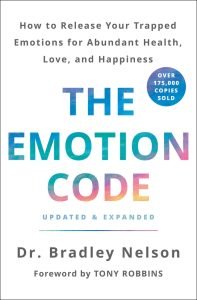How to Heal Your Trauma, Anxiety and Bad Emotions Trapped in Your Body
Are you feeling overwhelmed by the physical and emotional pain associated with unresolved trauma, anxiety, and bad emotions?
If so, you are not alone. Many of us have experienced some form of trauma or emotional distress in our lives, leading to physical and psychological issues. In this blog post, we’ll discuss how to identify, process, and heal these traumas, anxieties, and bad emotions that may be trapped in your body and blocking you from living your best life.
Why You Need to Release Your Trauma
Trauma, anxiety and negative emotions can be incredibly difficult to manage and can have long-lasting effects on our physical, mental and emotional wellbeing. Traumatic experiences can be rooted in our bodies for years, causing us to experience physical pain, low energy, blocked creativity and more. Releasing these trauma-related energies from our bodies is an essential step towards healing and creating a life of joy and abundance.
It’s important to understand that healing from trauma isn’t something that happens overnight. It takes time and patience to learn how to identify, process and release the energies held within the body, but it can be done. Learning how to heal yourself and reclaim your power is not only empowering but also liberating, enabling you to move forward with greater confidence and ease.
In this blog post, we will explore why you need to release your trauma, the process of releasing your trauma and the benefits of doing so. Let’s dive in!

The Process of Releasing Your Trauma
Releasing your trauma can be an incredibly liberating experience that allows you to take control of your emotions and heal from any past hurt. It is important to understand that no two people experience the same type of trauma, so it is important to find a process that works for you.
The first step in releasing your trauma is to identify what is causing the trauma. This can involve talking to a professional, such as a therapist or psychologist, to help you gain a better understanding of why the trauma is present. You may also want to consider keeping a journal and writing down any thoughts, feelings, and memories that come up when thinking about the source of your trauma.
Once you have identified the source of your trauma, you can begin to process and move through it. This involves learning how to acknowledge and accept what has happened to you and allowing yourself to feel the emotions that come up. It is important to do this in a safe and supportive environment, such as with a therapist or in a group setting.
Another step in releasing your trauma is to find ways to express it through art or writing. This can be a powerful way of expressing emotions in a safe way and can help you to process and release them in a constructive manner. If you are not comfortable with these forms of expression, then engaging in activities such as yoga or meditation can also be beneficial.
Finally, it is important to forgive yourself for anything that has happened in the past. This will help you to move forward and focus on the present moment. Once you have been able to forgive yourself and those who have caused harm, you can start to move on from your trauma and create positive change in your life.
The Benefits of Releasing Your Trauma
When we release our trauma, anxiety and other negative emotions, we are able to make huge strides in our overall well-being. Releasing these emotions can open up space for more positive experiences and a greater connection with ourselves and others. Some of the many benefits that come with releasing trauma include:
1. A Sense of Clarity and Closeness: When we release our trauma, anxiety and other negative emotions, it can create an increased sense of clarity and clarity of purpose. We can gain insight into our lives and find new direction. As we move through this process, we can also experience a greater sense of closeness with ourselves and others, as well as a greater sense of acceptance.
2. Greater Mental and Emotional Resilience: By releasing our trauma, we can become more resilient to mental and emotional stressors. We can become more confident in our ability to cope with stressful situations and emotions that used to overwhelm us. We can learn to express our feelings in healthier ways, helping us stay grounded during difficult times.
3. Improved Physical Health: Releasing trauma can have positive effects on our physical health as well. Research suggests that repressed emotions can manifest themselves in physical ailments, such as chronic pain, insomnia, digestive problems, and fatigue. Releasing our trauma can help reduce or even eliminate these symptoms, leaving us feeling healthier and more vibrant.
4. Enhanced Sense of Self-Worth: When we allow ourselves to feel our emotions fully and honor them, it can provide us with an increased sense of self-worth. We can begin to realize that we are worthy of being loved, accepted, and appreciated just as we are.
By taking the time to heal the trauma that is held deep within us, we can experience profound changes in our mental, emotional, and physical health. It is important to remember that the healing process takes time and patience, but it is worth the effort when you can experience the many benefits it has to offer.
How Releasing Your Trauma Can Help You Transform Your Life
The release of these pent-up emotions can have a profound effect on your life. You will be able to let go of fear and anxiety and embrace new possibilities and experiences. The healing process allows you to reconnect with yourself, allowing you to form healthier relationships with others and more deeply appreciate the beauty of life.
Releasing your trauma is a process of self-discovery, learning about what works for you, and creating an inner environment that is conducive to personal growth. As you make the journey of healing from trauma, you will find yourself gaining more confidence, becoming more compassionate towards yourself and others, and feeling more empowered to live your best life.













